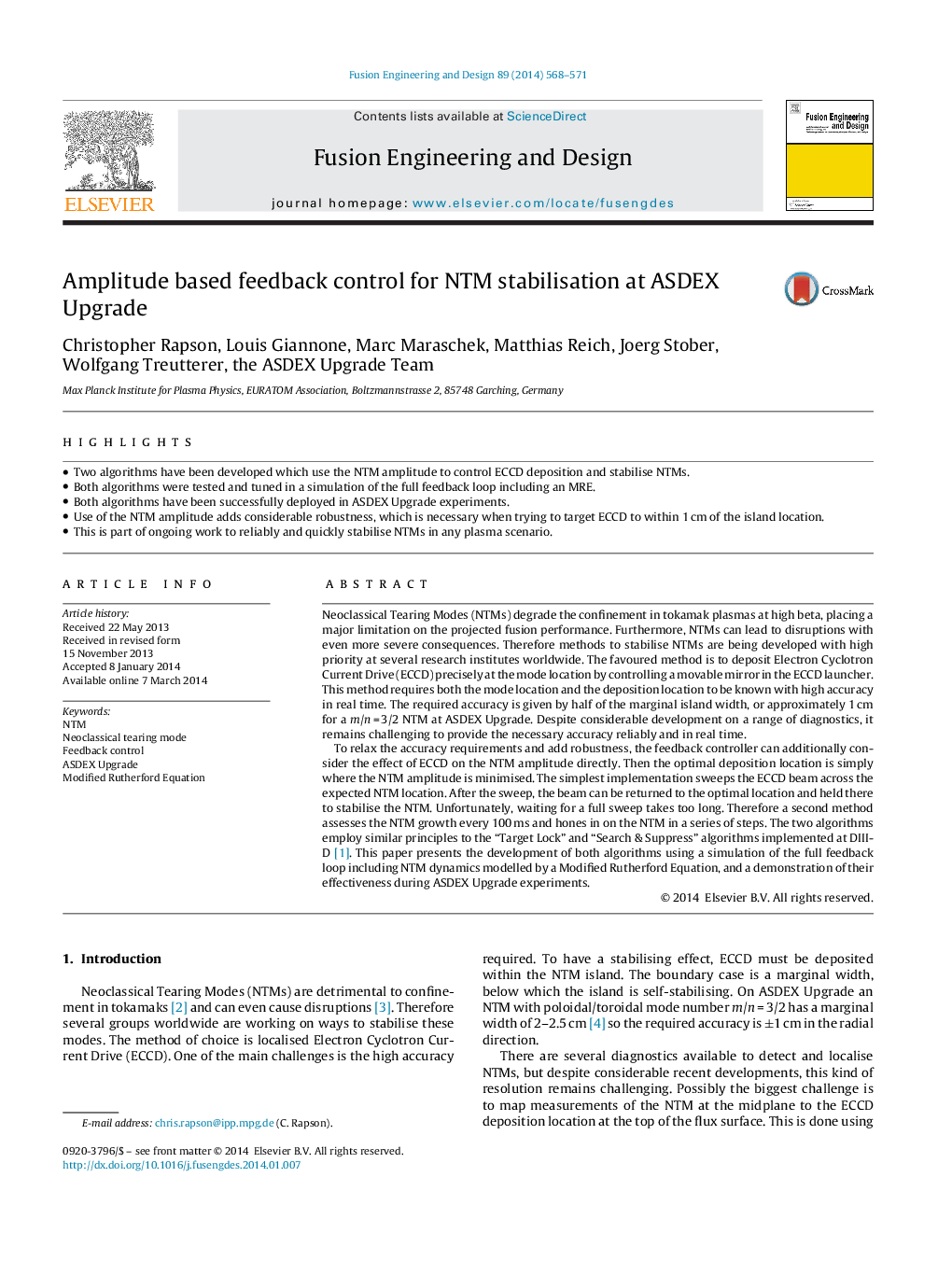| کد مقاله | کد نشریه | سال انتشار | مقاله انگلیسی | نسخه تمام متن |
|---|---|---|---|---|
| 271425 | 504995 | 2014 | 4 صفحه PDF | دانلود رایگان |

• Two algorithms have been developed which use the NTM amplitude to control ECCD deposition and stabilise NTMs.
• Both algorithms were tested and tuned in a simulation of the full feedback loop including an MRE.
• Both algorithms have been successfully deployed in ASDEX Upgrade experiments.
• Use of the NTM amplitude adds considerable robustness, which is necessary when trying to target ECCD to within 1 cm of the island location.
• This is part of ongoing work to reliably and quickly stabilise NTMs in any plasma scenario.
Neoclassical Tearing Modes (NTMs) degrade the confinement in tokamak plasmas at high beta, placing a major limitation on the projected fusion performance. Furthermore, NTMs can lead to disruptions with even more severe consequences. Therefore methods to stabilise NTMs are being developed with high priority at several research institutes worldwide. The favoured method is to deposit Electron Cyclotron Current Drive (ECCD) precisely at the mode location by controlling a movable mirror in the ECCD launcher. This method requires both the mode location and the deposition location to be known with high accuracy in real time. The required accuracy is given by half of the marginal island width, or approximately 1 cm for a m/n = 3/2 NTM at ASDEX Upgrade. Despite considerable development on a range of diagnostics, it remains challenging to provide the necessary accuracy reliably and in real time.To relax the accuracy requirements and add robustness, the feedback controller can additionally consider the effect of ECCD on the NTM amplitude directly. Then the optimal deposition location is simply where the NTM amplitude is minimised. The simplest implementation sweeps the ECCD beam across the expected NTM location. After the sweep, the beam can be returned to the optimal location and held there to stabilise the NTM. Unfortunately, waiting for a full sweep takes too long. Therefore a second method assesses the NTM growth every 100 ms and hones in on the NTM in a series of steps. The two algorithms employ similar principles to the “Target Lock” and “Search & Suppress” algorithms implemented at DIII-D [1]. This paper presents the development of both algorithms using a simulation of the full feedback loop including NTM dynamics modelled by a Modified Rutherford Equation, and a demonstration of their effectiveness during ASDEX Upgrade experiments.
Journal: Fusion Engineering and Design - Volume 89, Issue 5, May 2014, Pages 568–571